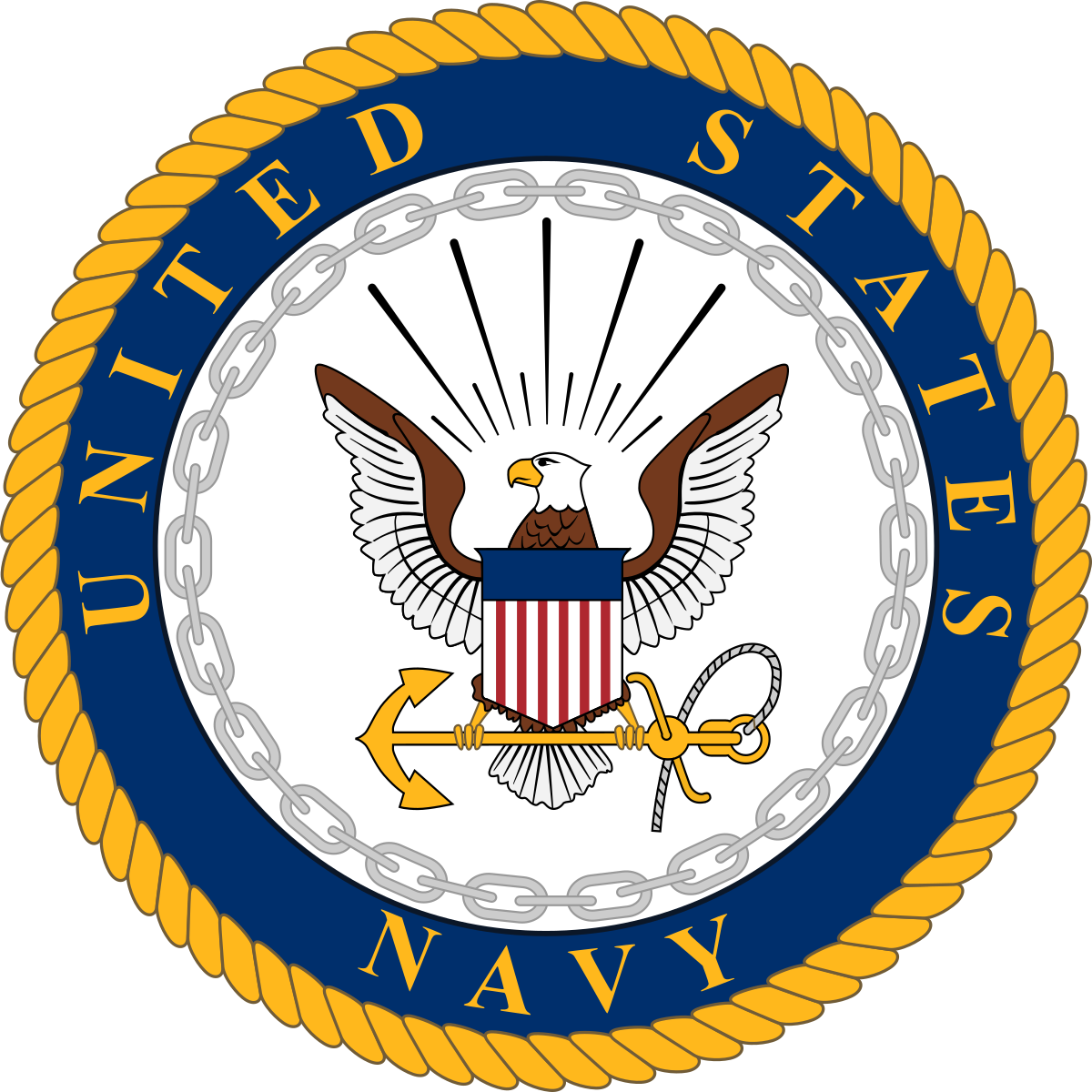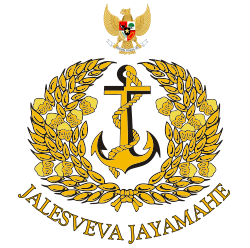Largest Navies in the World: Naval power is crucial for any country with coastal borders or global interests. A strong navy protects trade routes. It also protects a nation's shores from threats. The size and strength of a country's naval fleet often reflect its global influence.
The two largest navy fleets in the world are the United States Navy (USN), which consists of hundreds of warships, submarines, and aircraft. These ships include aircraft carriers, destroyers, and submarines. The USN is very advanced.
In second place comes the People's Liberation Army Navy (PLAN) of China, which is the largest, containing hundreds of warships, submarines, and aircraft.
These naval forces show the importance of maritime power in today's world. They also play a big role in keeping the peace and balance of power around the world. In this article, we'll take a look at the largest navies in 2025.
Check Out| Top 10 Most Powerful Countries in The World (2025) | Check India’s Rank
10 Largest Navy Fleets In The World 2025
Some navies focus more on big ships that stay on the water. Others put more effort into submarines or ships that carry planes. How big and strong a navy is can also depend on where the country is located. For example, many countries in Southeast Asia, like Indonesia, Thailand, and Vietnam, have large navies. This is because the South China Sea is a very important area.
According to the Global Naval Powers Ranking, here are the rankings for 2025:
| Rank | Navy | Units | TvR |
|---|---|---|---|
| 1 | United States Navy | 232 | 323.9 |
| 2 | People's Liberation Army Navy | 405 | 319.8 |
| 3 | Russian Navy | 283 | 242.3 |
| 4 | Indonesian Navy | 245 | 137.3 |
| 5 | Republic of Korea Navy | 147 | 122.9 |
| 6 | Japan Maritime Self-Defence Force | 105 | 121.3 |
| 7 | Indian Navy | 100 | 100.5 |
| 8 | French Navy | 70 | 92.9 |
| 9 | British Royal Navy | 50 | 88.3 |
| 10 | Turkish Navy | 90 | 80.5 |
| 11 | Italian Navy | 57 | 80.7 |
| 12 | Republic of China Navy | 94 | 74.6 |
| 13 | Egyptian Navy | 101 | 72.4 |
| 14 | Korean People's Army Naval Force | 195 | 67.9 |
| 15 | Algerian National Navy | 93 | 61.5 |
#1. United States Navy

The United States Navy (USN) has a large number of ships. These ships include aircraft carriers, destroyers, and submarines. The USN is very advanced. It has the highest aggregate displacement, reflecting its emphasis on larger vessels. The U.S. Navy has 232 ships in its active naval inventory. It is a dominant force. The USN can operate all over the world.
#2. People's Liberation Army Navy

China's People's Liberation Army Navy (PLAN) is one of the biggest and fastest-growing naval forces in the world. China has the largest Navy with 730 military vessels. The PLAN has been modernising its fleet and expanding its capabilities. The naval arsenal encompasses a diverse array of vessels, from aircraft carriers and destroyers to frigates and submarines.
#3. Russian Navy
The Russian Navy has a long history. It is a major military power. Russia holds the third position in fleet tonnage, with 1,260,447 tonnes. Certain naval forces emphasise surface vessels, while others concentrate on submarines or aircraft carriers.
#4. Indonesian Navy

The Indonesian Navy has a substantial fleet. It consists of 331 warships and submarines. Indonesia is an archipelagic nation. Its navy is important for protecting its waters. The Indonesian Navy plays a crucial role in maintaining regional security.
#5. Republic of Korea Navy

The Republic of Korea Navy has 227 units. It is a modern and capable force. It is focused on maritime defence. It has destroyers and submarines. The Republic of Korea Navy is essential for protecting South Korea's interests.
Explore| List of Top 10 Intercontinental Ballistic Missiles in 2025
List of Navy Fleet Strength by Country (2025)
According to the 2025 data from Global Firepower (GFP), which tracks all warship types, including aircraft carriers, submarines, helicopter carriers, corvettes, frigates, coastal types, amphibious assault/support vessels, and auxiliaries, the ranking of countries by the total number of warships and submarines from highest to lowest is as follows:
| Rank | Country | Fleet Size |
| 1 | China | 754 |
| 2 | United States | 440 |
| 3 | Russia | 419 |
| 4 | Indonesia | 331 |
| 5 | Sweden | 308 |
| 6 | India | 293 |
| 7 | Thailand | 293 |
| 8 | Sri Lanka | 270 |
| 9 | Finland | 264 |
| 10 | Colombia | 233 |
| 11 | Myanmar | 232 |
| 12 | South Korea | 227 |
| 13 | North Korea | 207 |
| 14 | Italy | 196 |
| 15 | Portugal | 194 |
India's Navy Strength in 2025
As of 2025, the Indian Navy is poised to enhance its operational capabilities significantly, focusing on modernisation, indigenisation, and expanding its overall strength. Below is an overview of its structure, naval assets, and strategic initiatives.
#1. Total Fleet Size
- Number of Vessels: Approximately 170 ships and submarines, including:
- Aircraft Carriers: 2
- Destroyers: 6
- Frigates: 11
- Corvettes: 22
- Submarines: 15 (of which 10 are conventional and 5 are nuclear-powered)
#2. Aircraft Carriers
- INS Vikrant: Commissioned in 2022, the first indigenous aircraft carrier with a displacement of 40,000 tons.
- INS Vishal: Planned, expected to be a larger carrier with a displacement of approximately 65,000 tons, designed for advanced capabilities.
#3. Submarine Fleet
- Conventional Submarines: Around 10 Kilo-class and Scorpène-class submarines.
- Nuclear-Powered Attack Submarines (SSNs): 5 submarines, with the INS Arihant class leading the capabilities.
- Nuclear Ballistic Missile Submarines (SSBNs): At least 5 strategically equipped to enhance deterrent capabilities.
#4. Destroyers and Frigates
Destroyers:
- Kolkata-class: 3 ships with advanced air defence systems and stealth features.
- Visakhapatnam-class: 3 new-generation destroyers, enhancing surveillance and combat capabilities.
Frigates:
- Talwar-class: Ongoing modernisation and new orders to strengthen surface combat capabilities.
#5. Naval Aviation
- Fleet Size: Roughly 200 aircraft, including:
Carrier-Based Aircraft:
- MiG-29K with around 45+ operational units.
- Future induction of Dassault Rafale M for enhanced carrier air power.
Maritime Patrol Aircraft:
- P-8I Poseidon, with 8 in service for surveillance and reconnaissance missions.
#6. Strategic Initiatives
Indigenisation Projects:
- Project 75(I): Development of advanced submarines with indigenous technology.
- Project 17A Frigates: Ongoing construction of a new class of stealth frigates domestically.
- Modernisation Programmes: Focus on improving cyber capabilities, anti-drone systems, and integrating advanced surveillance technologies.
#7. Naval Exercises and Partnerships
- Active participation in joint naval exercises with the United States, Russia, and ASEAN nations to enhance interoperability and combat readiness.
#8. Budget Allocation
2025 Naval Budget: Estimated at $18 billion, reflecting a continued emphasis on naval strength amidst increasing geopolitical tensions in the Indo-Pacific region.
What Specific Ships Will India Introduce by 2025?
By 2025, the Indian Navy is expected to introduce several specific ships as part of its ongoing modernisation and expansion plans. Here’s a detailed overview of the key ships slated for induction:
1. Aircraft Carriers
i) INS Vishal
- Expected commissioning: 2025 (tentative).
- Displacement: Approximately 65,000 tons.
- Features: Advanced CATOBAR (Catapult Assisted Take-Off But Arrested Recovery) system, enhanced air defence, and modern multi-role capabilities to operate advanced fighter aircraft.
2. Destroyers
i) Visakhapatnam-class Destroyers
- Quantity: 3 ships (INS Visakhapatnam, INS Mormugao, INS Imphal).
- Induction years: 2021-2025.
- Displacement: Approximately 7,400 tons.
- Tech Features: Advanced stealth technology, built-in Aegis combat system, multi-directional sonar, and powerful anti-ship and surface-to-air missiles.
3. Frigates
i) Project 17A Frigates
- Quantity: 7 ships, including INS Tamala and INS Udaygiri.
- Expected induction: Staggered commissioning from 2023 to 2025.
- Displacement: Approximately 6,000 tons.
- Key Features: Stealth design, advanced weapons systems including BrahMos missiles and vertical launch systems.
4. Corvettes
i) P-17A Corvettes
- Planned with 20+ units under development.
- Key Features: Enhanced stealth capabilities, modern sensors, and weapons systems.
5. Submarines
i) Project 75(I) Submarines
- Quantity: 6 indigenous conventional submarines.
- Expected induction: Starting around 2025.
- Technology: Air-independent propulsion (AIP) systems for extended range and stealth.
6. Auxiliary Ships
i) Fleet Support Ships
Quantity: Additional supply ships and replenishment vessels like the INS Aditya class.
Purpose: Enhance operational endurance and support extended missions.
7. Offshore Patrol Vessels
i) Additional OPVs
- New classes of patrol vessels to monitor and secure India's extensive maritime boundaries against piracy and smuggling threats.
Future Classes
- There are ongoing considerations for new classes of vessels, especially focused on:
- Landing Platform Docks (LPDs) for amphibious warfare capabilities.
- Invertible Amphibious Assault Ships (LHDs) for enhanced amphibious operations.
Comments
All Comments (0)
Join the conversation